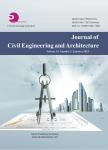
T=题名(书名、题名),A=作者(责任者),K=主题词,P=出版物名称,PU=出版社名称,O=机构(作者单位、学位授予单位、专利申请人),L=中图分类号,C=学科分类号,U=全部字段,Y=年(出版发行年、学位年度、标准发布年)
AND代表“并且”;OR代表“或者”;NOT代表“不包含”;(注意必须大写,运算符两边需空一格)
范例一:(K=图书馆学 OR K=情报学) AND A=范并思 AND Y=1982-2016
范例二:P=计算机应用与软件 AND (U=C++ OR U=Basic) NOT K=Visual AND Y=2011-2016

摘要:Shape grammar has been used by many researchers to identify and/or define languages in architectural design. This paper presents a methodology developed using shape grammar to analyze the informal city, specifically Favela da Rocinha’s buildings, in Rio de Janeiro. The goal was finding the organizational foundations of self-built houses in an informal settlement. A methodology was developed to find composition patterns and to infer a set of rules which defines a shape grammar of Rocinha houses, allowing synthesis and analysis of low cost solutions for house designs. And above all, it highlights underlying design solutions produced empirically by inhabitants of favelas, emphasizing the diversity in favela’s architecture, and, that is also able to reflect the particular necessities of targeted population.
地址:宁波市钱湖南路8号浙江万里学院(315100)
Tel:0574-88222222
招生:0574-88222065 88222066
Email:yzb@zwu.edu.cn

